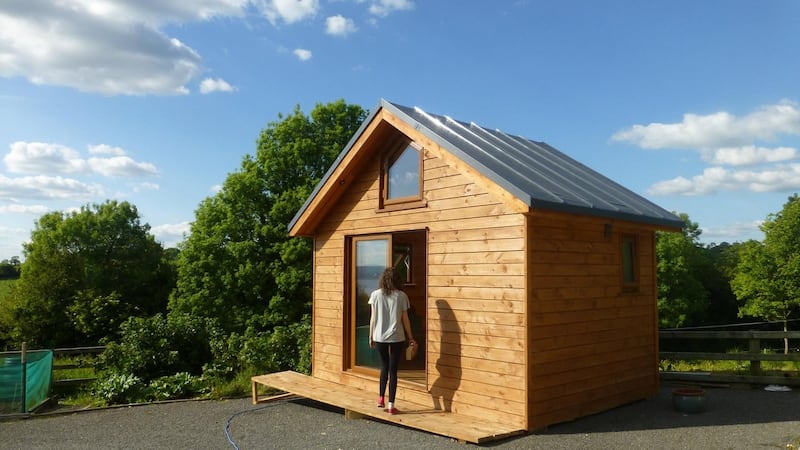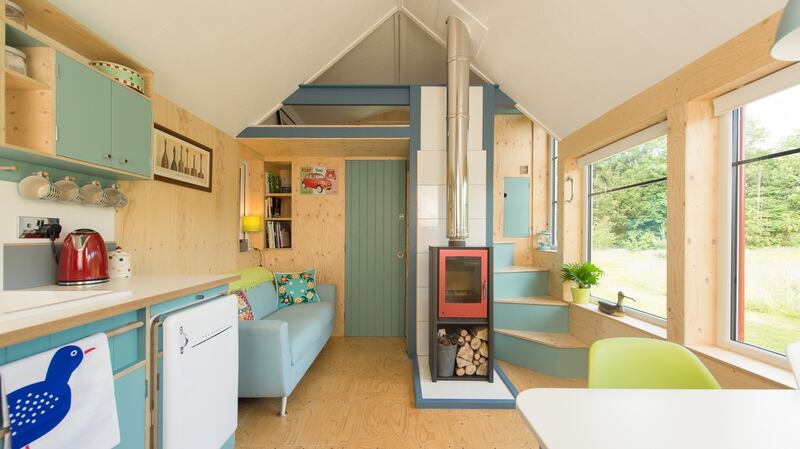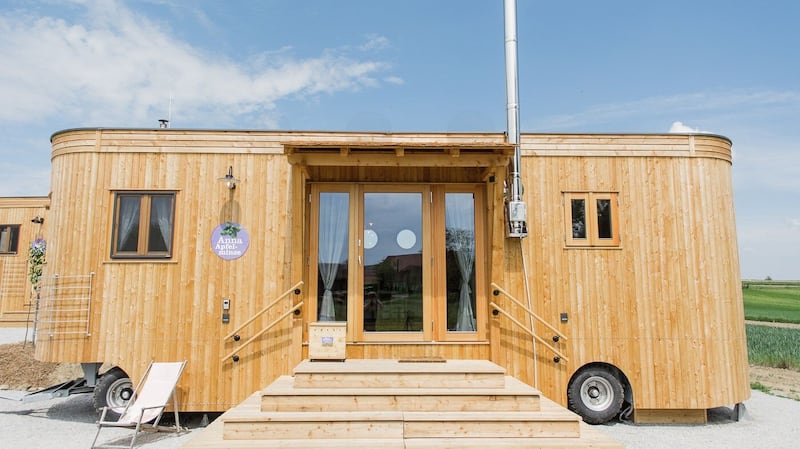For a growing number of home hunters, tiny is the new big. More than just a style of architecture, it’s a complete ideology.
"Tiny living is part of a social movement that is taking place to live more simply and to just have less stuff," says the aptly named Zoe Little, founder of Koto, a UK designer and builder of Scandinavian style cabins.
The company's founders lived in Norway for 10 years, where cabin culture is the norm. That experience informs both their designs and their thinking.
“In Norway everyone leaves work early on a Friday and heads to their cabin for the weekend, with no iphones – there’s no connection - to spend time with friends and family. For them it’s about getting the balance right between work and life and about spending more time outdoors,” says Little.
In many other countries, including Britain and Ireland, tiny living is also a reaction to high property prices.
“Large properties are becoming less attractive to millennials. It’s not what they want, for them it’s about having less stuff. Tiny living is about focusing less on materialism and having more balance in your life,” says Little.
Though everything is bigger in America, it’s where the tiny living movement originated. There tiny homes, many of which are on wheels, are installed in the wild so that people can live off grid, redoubt style.
In Ireland, a dearth of wilderness and a preponderance of planning means most tiny homes end up in people’s gardens. But interest in that is growing too, driven again by demographics.
"We've a lot of older people in Celtic Tiger homes that want to downsize but can't find suitable smaller properties nearby," says Colla McCarthy of Tipperary based Tiny Homes Ireland, which builds 22 sq m (237 sq ft) tiny homes from €30,000.
Of course, Ireland invented tiny homes, and not just in the form of shoebox apartments. We call them cottages and most of us only emerged from them a generation or two ago. €30,000 will still find you a doer-upper cottage in a remote part of Ireland. But if you’re looking for something a little different, check out these bijou alternatives.
Treetops in Washington
Anyone who has ever seen US TV show Treehouse Masters will be familiar with Pete and Judy Nelson and their stunning treehouses. No playthings these – unless of course you're one of their wealthy clients, in which case they actually are - they're finished to live in, including insulation, plumbing and electrics. To date the company has built over 350 treehouses around the world, using low impact building practices and environmentally sustainable materials, prefabricated in their Washington State factory. See for yourself with a stay at TreeHouse Point near Seattle where a variety of treehouses are available for holiday makers to hire. treehousepoint.com
Tiny in Tipp
If you want to see TinyHomes.ie's handy work up close can book into Lakeview Tiny Home. Its demo model slash showroom was recently awarded a "most unique listing in Ireland" status by Airbnb. It's situated in a woodland overlooking Lough Derg and has a kitchen, bathroom and lofted bedroom – plus enough insulation to make it suitable for all seasons. Outside there is a wooden deck with a table and two chairs. The TinyHomes.ie owner lives next door, so you can talk to him about getting one of your own while you're there. Each takes around six weeks to build and is delivered fully finished with connections for plumbing and electricity, hot water heater, electric hob, sink, shower and toilet. tinyhomes.ie

Nesting in Scotland
Tiny House Scotland is a UK tiny house builder owned by craftsman Jonathan Avery, who designs and builds small scale moveable architecture. His trademarked NestHouse is a highly insulated, moveable, modular, micro house system. Each NestHouse is 3.4m (11ft) wide but available in a variety of lengths, with module combinations giving internal floor space from 10 sq m (107 sq ft) to 50 sq m (538 sq ft), with prices starting from £40,000 (€46,198). Each can be used either on grid, off grid, or hybrid powered and are built off site and delivered as a fully finished building. It's currently up for an architectural award through its work at Social Bite Village, a provider of accommodation for homeless people in Edinburgh which has 11 NestHouses on site. tinyhousescotland.co.uk

Wanderly Wagons in Austria
For those who want to bring their tiny home with them, check out Austria's Wohnwagon, which can be hitched to the back of a car. Units are 25 sq m (270 sq ft) and totally self sufficient for living, thanks to a solar system on the roof, a bio toilet and eco friendly water treatment system. If you're thinking caravan, think again. Wohnwagons are clad in wood - mainly larch – so only the chassis is made of metal. Interiors feature pine with walls of clay and are insulated with sheep's wool which protects against both heat and cold. It also removes pollutants from the air, regulates moisture and allows air to circulate. wohnwagon.at

House ahoy
Northern Ireland architect Patrick Bradley is responsible for not just one of the most unusual houses in Northern Ireland but one of the best episodes of TV's Grand Designs, in which viewers saw him builds a home, Grillagh Water House, from shipping containers. Containers were also the star of the RIPPLE home project four years ago. It saw the conversion of a 12m (40 ft) shipping container into a two bedroom home, now in use as emergency home unit by St Vincent de Paul, in just three days. That project was led by Dublin based Ceardean Architects and the practice has continued to look at container living. Last year it converted a 6 ft (20 ft) container into a mobile sleeping pod, with en suite, that can be located around the country at short notice.

First class cabins
If it's cabin fever you've got, check out Koto, the UK practice of architects and designers whose love of the great outdoors has led them to design and craft some pretty crafty cabins. The word Koto is Finnish for "cosy at home" and these modular micro homes are built for year round use with a de luxe finish. Each is designed, built off site and delivered complete, ready to move into and, because cabins are all about the great outdoors, Koto's designs work to bring the outside in, thanks to ample use of large scale glazing. They make intelligent use of space too, using a fold down bed to transform a the living space into a cosy bedroom and a wood fired outdoor hot tub for star gazing. They do saunas too.
Tiny hotels
One way to get a flavour of tiny living, and see the variety of styles available, is to stay at one of the tiny house hotels open to guests in states right across the USA, including Arizona, Colorado and Florida, built by specialist provider Tumbleweed Houses. You can stay in one in the hip city of Austin, Texas, from $ 129 (€115) a night, for a room that sleeps four – which is huge in tiny terms. www.tumbleweedhouses.com
Cobbled together
Cob works well for tiny homes too, including natural building expert Simon Dale's Hobbit House, in Wales. Dale built it without having a building or carpentry background and reckons this kind of building, which uses a mixture of mud, straw bales and wood thinnings, is accessible to anyone. The roof is made of plastic sheeting covered in turf and mud with breathable lime plaster on the walls. It took four months the build the tiny family home, with the help of Dale's family and friends. It cost less than €5,000 to build, a tiny amount by any standard. simondale.net
















